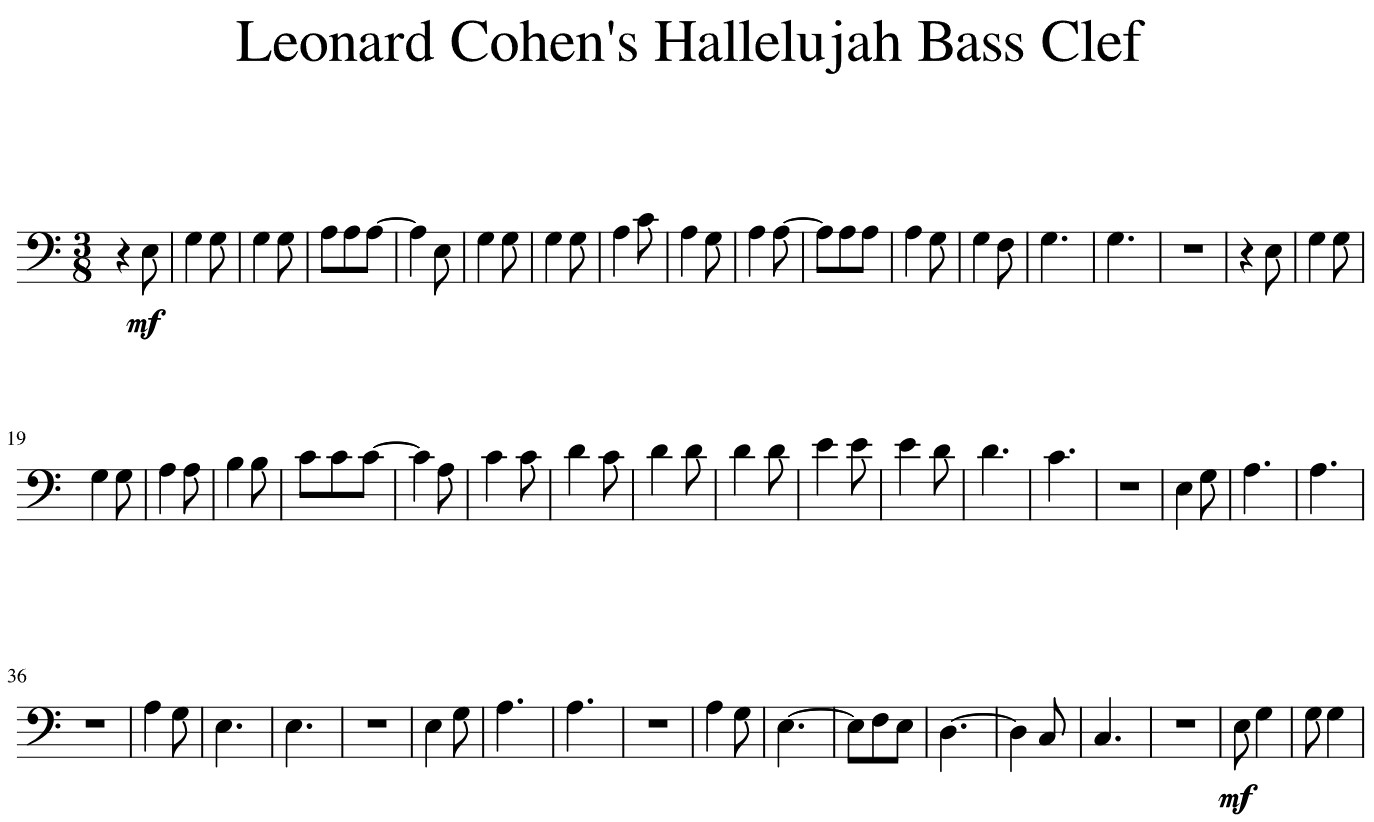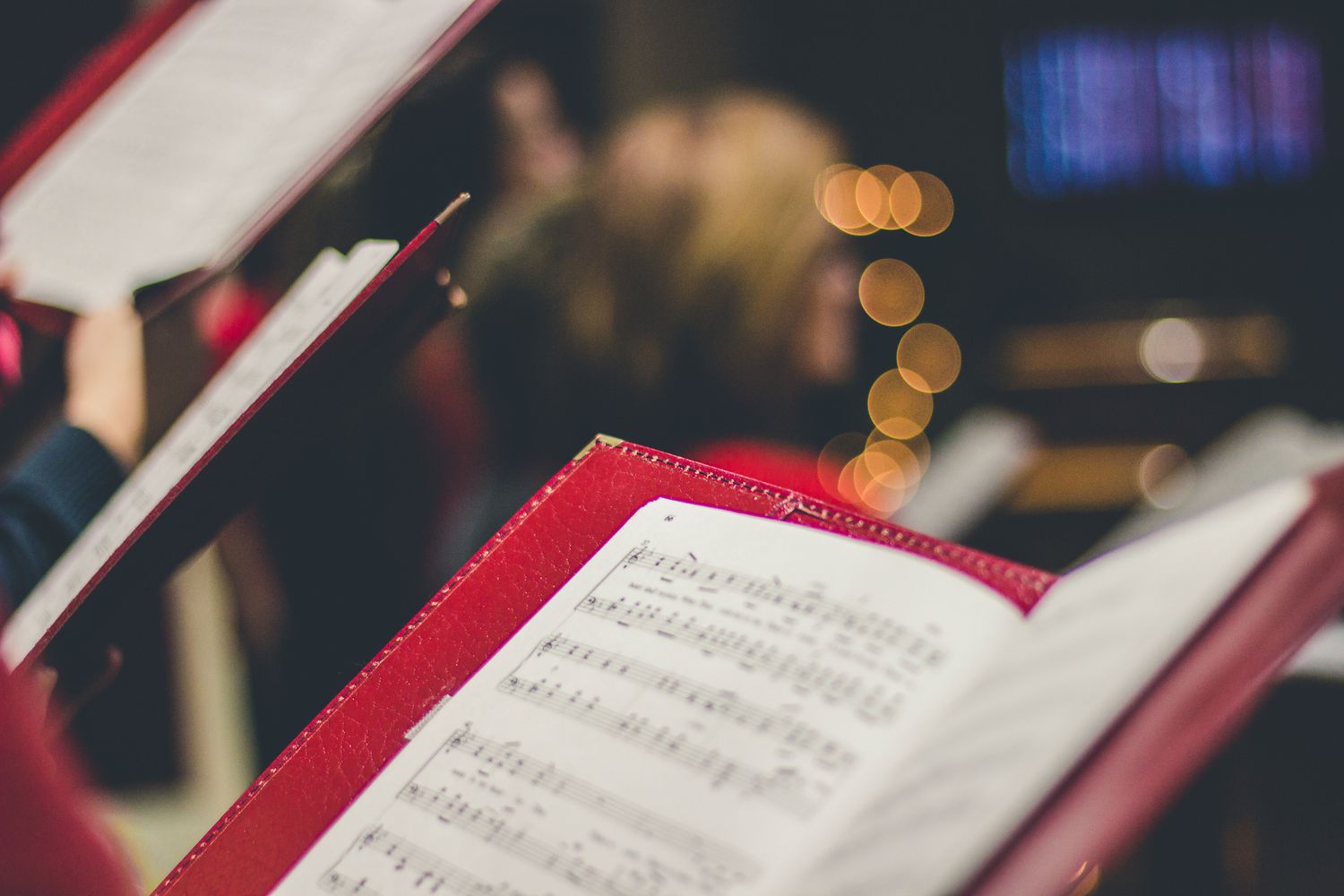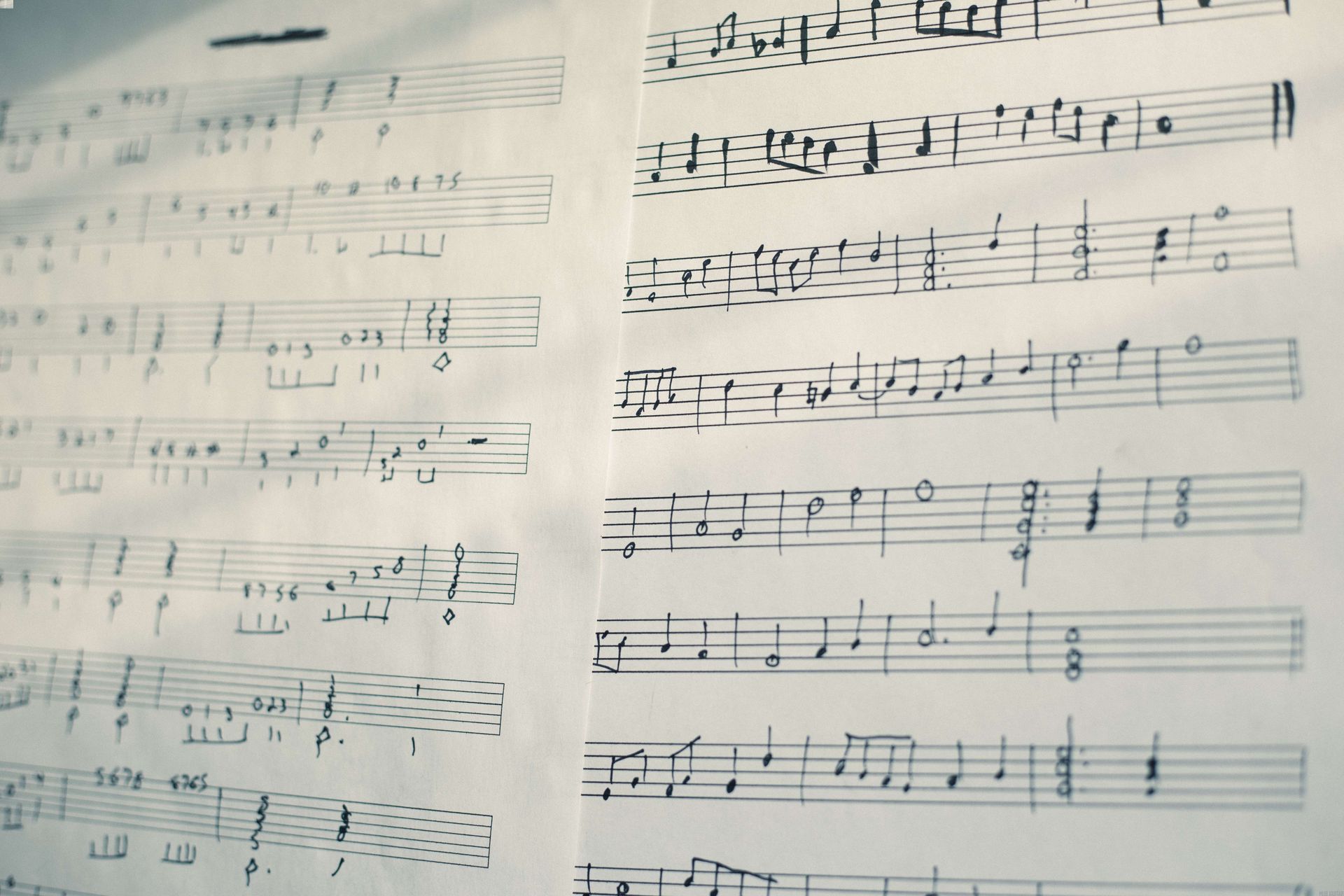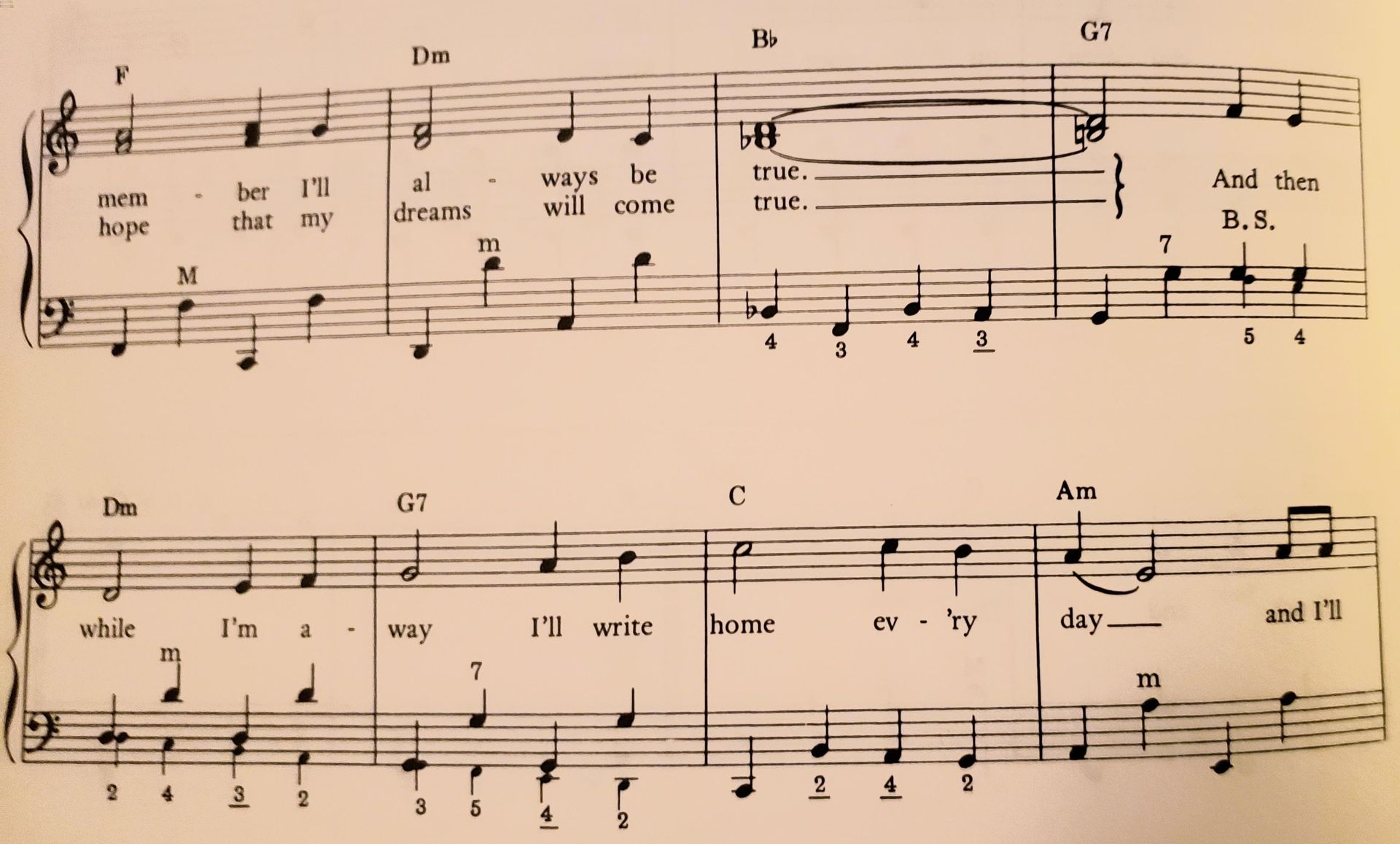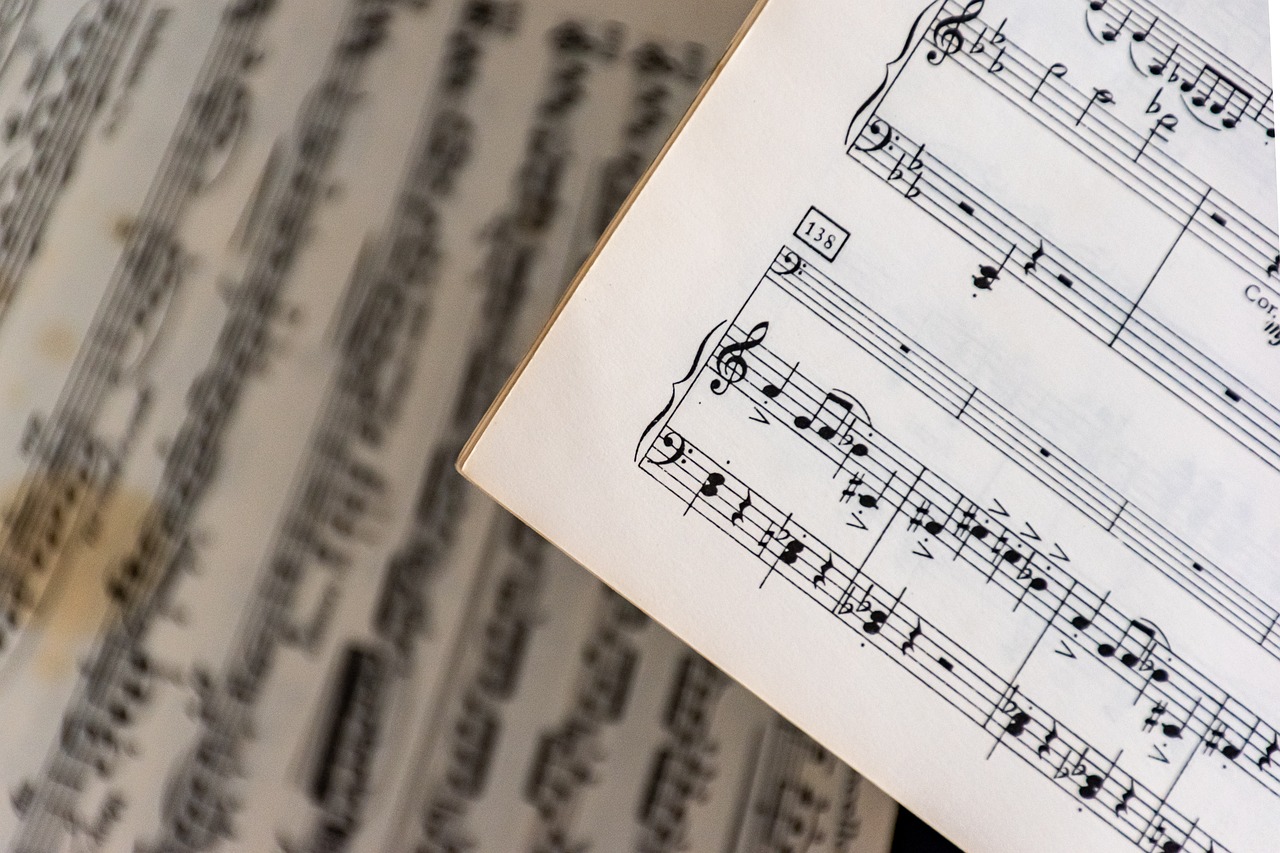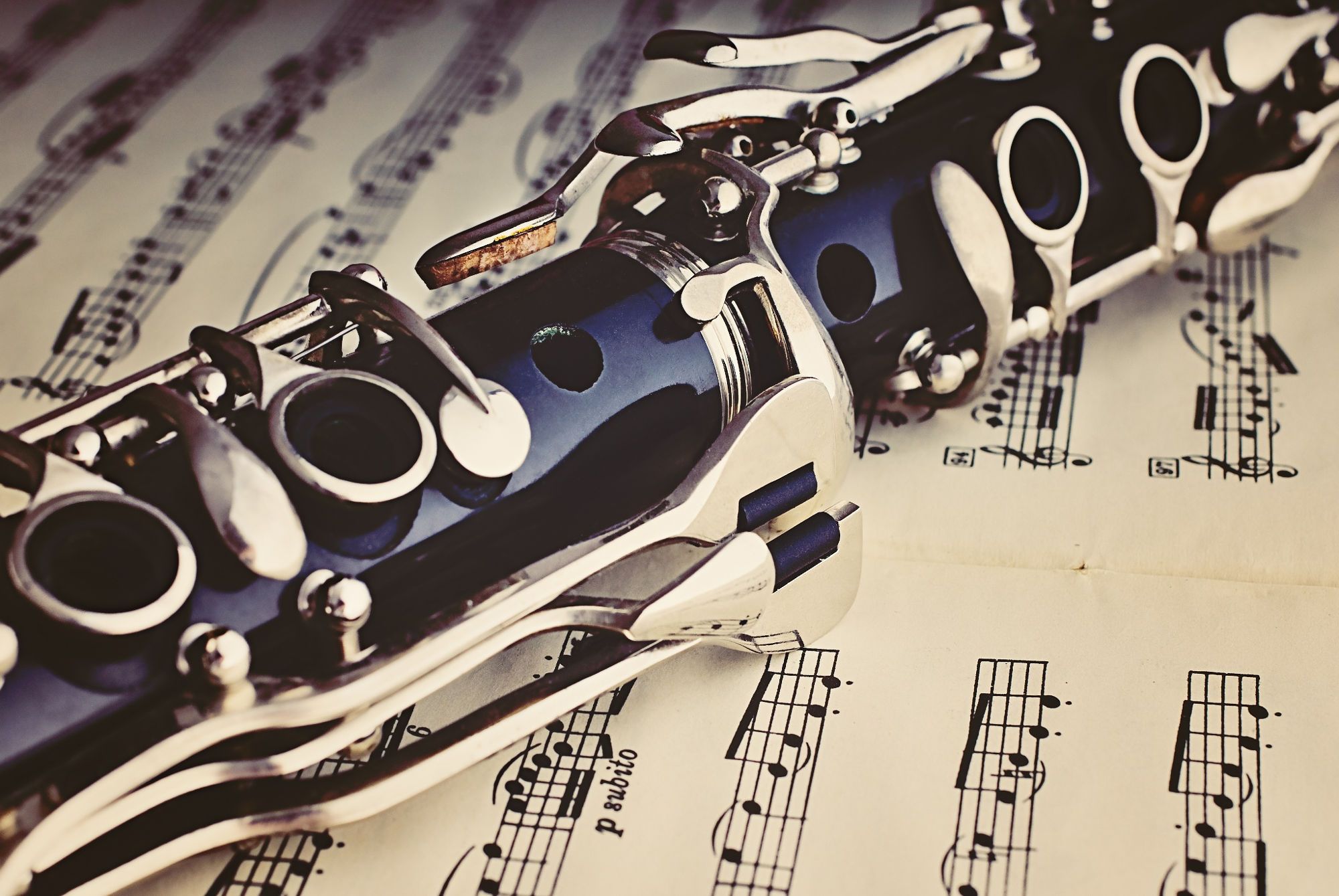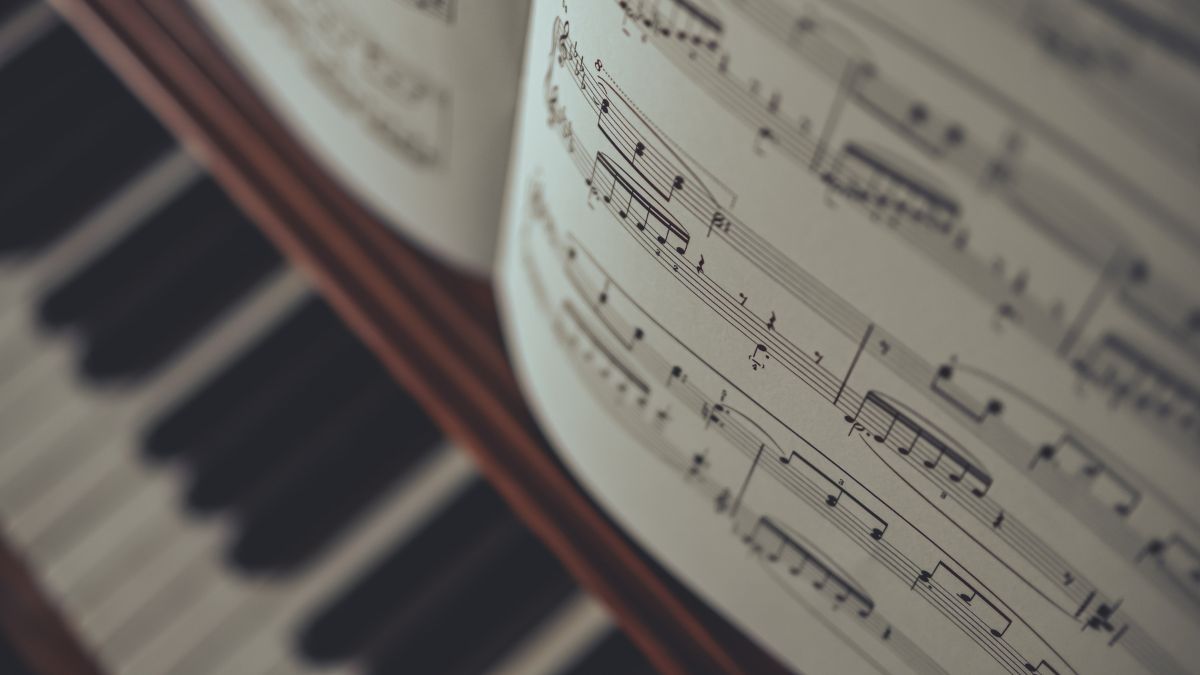Home>Production & Technology>Sheet Music>How Do You Read Guitar Sheet Music


Sheet Music
How Do You Read Guitar Sheet Music
Modified: February 15, 2024
Learn how to read guitar sheet music and improve your playing. Enhance your skills with our comprehensive guide on understanding sheet music for guitar
(Many of the links in this article redirect to a specific reviewed product. Your purchase of these products through affiliate links helps to generate commission for AudioLover.com, at no extra cost. Learn more)
Table of Contents
Introduction
Sheet music is the written form of music notation that allows musicians to perform a piece of music accurately. For guitar players, being able to read guitar sheet music is an essential skill that opens up a world of musical possibilities. Whether you’re a beginner trying to learn your favorite songs or a seasoned guitarist looking to expand your repertoire, understanding how to read guitar sheet music is crucial.
In this article, we will explore the basics of guitar sheet music, including reading musical notation, understanding guitar tablature, recognizing chords and chord diagrams, mastering rhythmic notation, and techniques for sight-reading. Additionally, we’ll provide some tips and practice strategies to help you improve your reading skills.
While reading sheet music may seem intimidating at first, with practice and patience, it becomes a valuable tool in your musical journey. Not only does it enable you to play a wide range of songs accurately, but it also enhances your understanding of music theory, improves your sight-reading ability, and allows you to communicate effectively with other musicians.
So, whether you aspire to play classical guitar compositions, jazz standards, or your favorite rock and pop songs, learning how to read guitar sheet music is an invaluable skill that will propel your musical growth. Let’s dive into the fascinating world of guitar sheet music and unlock the potential of your playing!
Basics of Guitar Sheet Music
Guitar sheet music consists of several elements that convey valuable information to the performer. Familiarizing yourself with these basic components will pave the way for a better understanding of the music and smoother playing. Let’s explore these essential elements:
- Treble Clef: In guitar sheet music, the treble clef is used to indicate the pitches of the notes. The symbol resembles a stylized “G” and is also known as the G clef. Most guitar music is written in the treble clef.
- Staff: The staff consists of horizontal lines and spaces where the notes and other symbols are placed. Each line and space represents a different pitch.
- Notes: Notes are represented by oval-shaped symbols placed on the staff. The position of the note determines the pitch, while the shape of the note determines its duration.
- Rests: Rests indicate moments of silence or pauses in the music. They are represented by symbols that correspond to different durations.
- Time Signature: The time signature indicates the organization of beats within a measure. It consists of two numbers: the top number represents the number of beats in a measure, while the bottom number denotes the type of note that receives one beat.
- Key Signature: The key signature indicates the key in which the music is written. It is represented by sharp (#) or flat (b) symbols placed at the beginning of the staff.
- Chords: Chords are written as stacked notes played simultaneously. They are represented by diagrams consisting of vertical lines and numbers that indicate the fingers to use and the frets to press.
Understanding these fundamental elements of guitar sheet music is the first step towards becoming proficient in reading music notation. With practice and exposure to different musical genres, you will develop a strong foundation that allows you to interpret and play sheet music with confidence.
Reading Musical Notation
Reading musical notation is an essential skill for guitarists who wish to broaden their musical horizons. By understanding the symbols and markings used in sheet music, you can accurately interpret and perform the music as intended. Here are some key elements of musical notation:
- Notes: Notes are represented by oval-shaped symbols placed on the staff. Each note corresponds to a specific pitch, and its placement on the staff indicates its position on the fretboard. The shape of the note determines its duration, with whole notes being the longest and sixteenth notes being the shortest.
- Accidentals: Accidentals modify the pitch of a note. The sharp (#) symbol raises a note by a semitone, while the flat (b) symbol lowers a note by a semitone.
- Ties: Ties are curved lines that connect two or more notes of the same pitch. They indicate that the combined duration of the tied notes should be played as a single sustained note.
- Dynamics: Dynamics indicate the volume at which the music should be played. Common dynamic markings include mezzo piano (mp), mezzo forte (mf), piano (p), and forte (f), among others.
- Articulations: Articulations instruct how individual notes should be played. Examples include staccato (short and detached), legato (smooth and connected), and accent (emphasized).
- Repeat Signs: Repeat signs indicate sections of music that should be repeated either immediately or later in the composition.
- Coda and Segno: Coda and Segno are symbols used in sheet music to indicate specific points to jump to or repeat, often found in more complex compositions.
As you gain familiarity with these musical notation symbols, reading sheet music will become second nature. Practice sight-reading exercises and gradually tackle more challenging pieces to sharpen your skills. Additionally, listening to recordings of the music you’re learning can help solidify the connection between the sheet music and the sounds you produce on your guitar.
Remember, reading music notation is not just about playing the correct notes. It’s about capturing the expression, dynamics, and nuances of the music to bring it to life. With dedication and consistent practice, you’ll become a skilled reader of musical notation and elevate your guitar playing to new heights.
Understanding Guitar Tablature
Guitar tablature, or simply “tabs,” is a popular alternative to traditional sheet music notation for guitarists. It provides a simplified way of representing music specifically for the guitar. Tabs use a combination of numbers and symbols to indicate which strings to play and on which frets. Here’s what you need to know to understand guitar tablature:
- Lines and Numbers: Guitar tabs consist of six lines, each representing a string on the guitar. The top line represents the high E string, while the bottom line represents the low E string. Numbers placed on these lines indicate which fret to press down on that string.
- Notes and Chords: Each number on a line represents a specific note or chord. For example, a “3” means you should press down on the third fret, while a “0” indicates an open string (played without pressing any fret).
- Rhythms and Durations: Tabs may include additional symbols to indicate the duration and timing of notes. Common symbols include dashes (-) for sustained notes, slashes (/ or ) for slides, and “h” for hammer-ons or “p” for pull-offs.
- Bends and Vibrato: Tabs also incorporate symbols to indicate techniques like bends and vibrato. A curved arrow or “b” denotes a bend, while a wavy line or “v” signifies vibrato.
- Chord Diagrams: In tabs, chord diagrams may be included above the notation to indicate specific chord shapes. These charts show the frets and strings to press down to form chords.
Guitar tablature is a valuable resource for guitarists, especially those who prefer to learn songs by ear or play popular music. It allows for a visual representation of guitar music that is relatively easy to understand, even for beginners. While tabs lack the precise rhythmic and dynamic information found in traditional sheet music, they offer a quick way to learn and play songs on the guitar.
It’s important to note that not all music is available in tablature format, especially more complex compositions or classical repertoire. However, mastering tabs can greatly expand your repertoire and allow you to quickly learn and play songs you enjoy.
By combining your understanding of sheet music notation with guitar tablature, you gain a comprehensive approach to reading and learning music for the guitar. Experiment with both styles and find what works best for you as a guitarist.
Recognizing Chords and Chord Diagrams
Chords are an integral part of guitar playing, allowing you to create harmony and provide a solid foundation for songs. Recognizing chords and understanding chord diagrams is essential for reading and playing guitar sheet music. Here’s what you need to know:
Chord Symbols: Chord symbols are written above the staff or within guitar sheet music to indicate which chords to play. They are made up of a letter or letters, representing the root note, followed by additional symbols that indicate the chord type or modifications. Common chord symbols include C, Am, G7, and Dm7.
Chord Diagrams: Chord diagrams provide a visual representation of where to place your fingers on the guitar neck to form a specific chord. They consist of a grid-like illustration of the guitar fretboard, with dots or numbers indicating the position and finger placement for each string. Chord diagrams enable you to quickly learn and play different chord shapes.
String and Fret Numbers: In a chord diagram, the vertical lines represent the strings on the guitar, with the low E string on the left and the high E string on the right. Fret numbers are placed horizontally, indicating which fret to press down on each string to form the desired chord shape.
Finger Placement: Chord diagrams often include numbers or letters on the dots, indicating which fingers to use. Typically, numbers 1, 2, 3, and 4 represent the index, middle, ring, and pinky fingers, respectively. Sometimes, letters like T (thumb) or X (mute) may be used for specific techniques or string muting.
By familiarizing yourself with chord symbols and chord diagrams, you can quickly decipher which chords to play while reading guitar sheet music. Understanding chord diagrams allows you to learn new chord shapes, experiment with different voicings, and play a wide variety of songs.
It’s important to note that while chord symbols and diagrams provide a starting point, it’s equally essential to develop your chord vocabulary and understand different chord voicings, inversions, and variations. This knowledge will enable you to create interesting chord progressions and add your own personal touch to the music you play.
By combining your understanding of chords and chord diagrams with other elements of guitar sheet music, such as notes, rhythms, and dynamics, you can confidently approach any music piece, further expanding your repertoire and musical capabilities.
Mastering Rhythmic Notation
Rhythmic notation is a crucial aspect of guitar sheet music that allows you to accurately interpret and reproduce the rhythm of a piece. Understanding and mastering rhythmic notation is essential for accurately playing and communicating musical ideas. Here are some key elements to help you navigate rhythmic notation:
Note Durations: Rhythmic notation uses various note symbols to represent different durations. Common note durations include whole notes, half notes, quarter notes, eighth notes, and sixteenth notes. Each note value has a specific duration, and they are typically combined to form rhythmic patterns.
Rests: Rests indicate moments of silence or pauses in the music. They are represented by symbols that correspond to different durations, similar to note durations. Rests allow for rhythmic variety and provide opportunities to emphasize certain beats or create space within the music.
Time Signature: Time signatures are notated at the beginning of a musical piece and indicate the number of beats per measure. They consist of two numbers stacked vertically. The top number represents the number of beats, while the bottom number represents the note value that receives one beat. Common time signatures include 4/4, 3/4, and 6/8.
Syncopation: Syncopation occurs when accents or emphasized beats are placed on weak or off-beat divisions of the measure. It adds rhythmic interest and can create a more dynamic and exciting musical feel. Recognizing syncopated rhythms in sheet music will help you accurately play and convey their intended groove.
Ties and Dots: Ties and dots are used to alter the duration of notes. A tie connects two or more notes of the same pitch, indicating that their durations should be added together and played as a single sustained note. A dot placed after a note increases its duration by half of its original value.
Developing a solid understanding of rhythmic notation takes time and practice. It’s beneficial to focus on counting and internalizing the rhythm of a piece. Clapping or tapping along with the music can help solidify the rhythmic patterns and create a strong sense of timing and groove.
Listening to recordings of the music you’re learning is also invaluable for ingraining the feel and rhythm of the piece. Pay attention to the intricate rhythmic nuances and try to replicate them in your own playing.
Remember, rhythm is the foundation of music, and by mastering rhythmic notation, you enhance your ability to accurately interpret and convey the musical ideas present in guitar sheet music. With consistent practice and attention to detail, your rhythmic proficiency will greatly contribute to your overall guitar playing skillset.
Techniques for Sight-Reading Guitar Sheet Music
Sight-reading is the ability to read and perform music on the spot, without prior preparation. Developing sight-reading skills is crucial for guitarists who want to expand their repertoire and play in a variety of musical settings. Here are some techniques to improve your sight-reading ability:
Practice regularly: Consistent practice is key to improving sight-reading skills. Set aside dedicated time each day to work on sight-reading exercises and pieces. Start with simpler melodies and gradually progress to more complex music.
Focus on rhythm: Pay close attention to the rhythmic elements of the music while sight-reading. Count aloud or tap your foot to maintain a steady pulse. This will help you stay on track and accurately interpret the timing of the notes.
Scan ahead: When sight-reading, try to scan a few measures ahead to anticipate upcoming notes and chords. This allows you to prepare your fingers and reduce the likelihood of stumbling over difficult passages.
Identify patterns: Look for familiar patterns, chord progressions, or scale runs within the music. Recognizing recurring patterns can help you quickly decipher and play unfamiliar passages.
Simplify complex passages: If you encounter a challenging section while sight-reading, simplify it by focusing on the essential notes or playing the basic chords. This keeps the music flowing and allows you to maintain the overall structure of the piece.
Keep a steady tempo: Sight-reading can be challenging, but resist the urge to slow down significantly or stop completely when encountering difficult sections. Aim to maintain a consistent tempo and rhythm throughout the piece, even if you make mistakes.
Develop your theory knowledge: Understanding music theory concepts, such as scales, intervals, and chord progressions, can greatly assist in sight-reading. The more familiar you are with these concepts, the quicker you can comprehend and perform the music.
Play a variety of music: Expose yourself to different musical genres and styles while sight-reading. This helps broaden your musical vocabulary and exposes you to various rhythmic patterns and chord progressions.
Record and review: Record yourself sight-reading and listen back to identify areas for improvement. Reflect on what worked well and what needs more practice. This self-assessment allows you to track your progress and focus on specific areas that require attention.
Seek sight-reading opportunities: Look for opportunities to sight-read in group settings, such as jam sessions or ensemble rehearsals. Sight-reading with others enhances your ability to follow along and adapt to different musical contexts.
Remember, sight-reading is a skill that improves with consistent practice and exposure to various musical materials. Be patient with yourself and celebrate small victories along the way. With time and dedication, you’ll become a confident sight-reader, opening up a world of musical possibilities on the guitar.
Tips and Practice Strategies
Improving your sheet music reading skills and becoming a proficient guitarist requires consistent practice and focused strategies. Here are some tips and practice strategies that can help you enhance your abilities:
Start with simple exercises: Begin with simple sight-reading exercises or short melodies to build your confidence and familiarity with reading sheet music. Gradually increase the difficulty level as you progress.
Practice both hands separately: When learning a new piece, practice each hand separately before attempting to play them together. This allows you to focus on finger placement, notes, and rhythm for each hand independently.
Break down complex passages: If you come across a challenging passage, break it down into smaller sections. Practice each section slowly until you can play it accurately, then gradually increase the speed until you can smoothly connect the sections.
Utilize a metronome: Incorporate a metronome into your practice routine to develop a strong sense of timing and precision. Begin playing at a slower tempo and gradually increase the speed as you become more comfortable with the piece.
Chunking technique: Use the chunking technique to help memorize and internalize music. Break the piece into smaller chunks or phrases and practice each section until you can play it fluently. Then, gradually piece the sections together.
Practice sight-reading with a variety of genres: Challenge yourself by sight-reading different genres of music, such as classical, jazz, rock, or pop. This exposes you to diverse musical styles and rhythms, expanding your musical vocabulary.
Record your practice sessions: Record yourself while practicing and listen back to evaluate your performance. Pay attention to areas where you need improvement, such as timing, dynamics, or accuracy, and make adjustments in subsequent practice sessions.
Focus on accuracy over speed: When practicing sheet music, prioritize accuracy and precision rather than speed. It’s better to play a piece correctly at a slower tempo than to rush through and make mistakes. Gradually increase the tempo as you become more comfortable and confident.
Join a music ensemble: Participating in a music ensemble, such as a band or orchestra, exposes you to sight-reading challenges and helps develop your ability to follow along with other musicians. It also provides valuable opportunities for collaboration and musical growth.
Stay motivated and set goals: Maintain a positive mindset and set realistic practice goals. Regularly reassess and adjust your goals to keep yourself motivated and engaged in your practice routine.
Remember, improving your sheet music reading skills and guitar playing abilities takes time and dedication. Be patient with yourself and celebrate your progress along the way. With consistent practice, you’ll see significant improvement and enjoy the journey of becoming a skilled guitarist.
Conclusion
Mastering the art of reading guitar sheet music is a valuable skill that opens up a world of opportunities for guitarists. Whether you’re a beginner or an experienced player, understanding how to read sheet music allows you to expand your repertoire, improve your musicianship, and communicate effectively with other musicians.
In this article, we explored the basics of guitar sheet music, including reading musical notation, understanding guitar tablature, recognizing chords and chord diagrams, and mastering rhythmic notation. We also discussed techniques for sight-reading and provided tips and practice strategies to help you improve your sheet music reading skills.
Remember, becoming proficient in reading guitar sheet music takes practice, patience, and dedication. Implementing the suggested tips and strategies, along with consistent practice, will lead to gradual improvement in your sight-reading abilities.
So, dive into the fascinating world of guitar sheet music, challenge yourself with a variety of musical genres, and continue to seek opportunities to further refine your skills. Embrace the journey, and with each new piece of sheet music you encounter, you’ll become a more confident and versatile guitarist.
Keep practicing, stay passionate, and let the magic of guitar sheet music guide your musical journey to new heights.


